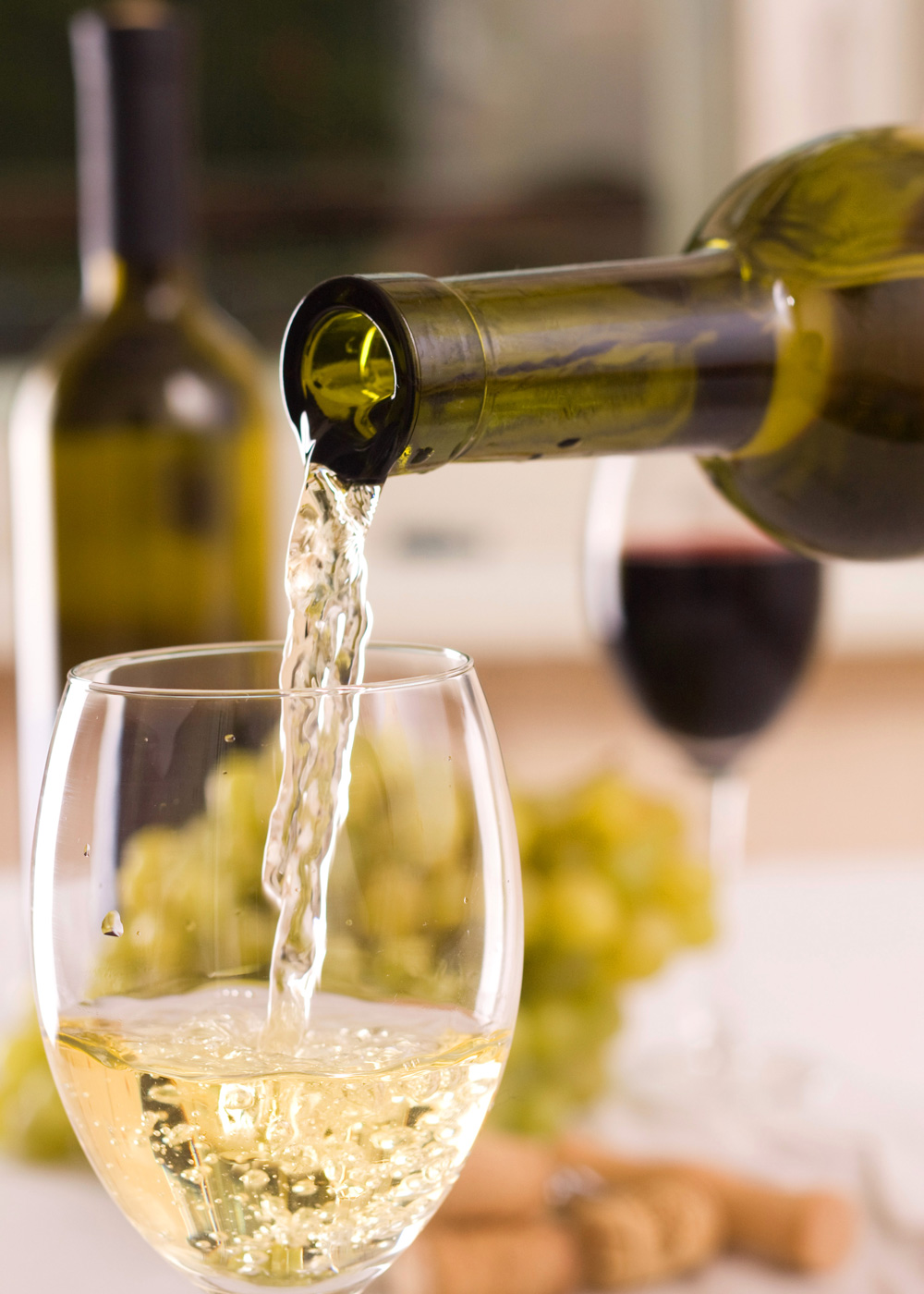Sauvignon Blanc was first documented in the Loire Valley of France during the sixteenth century. Its name is likely derived from the French word for savage, “sauvage.” This may be because of its sharp, crisp flavors, or the fact that it grows very vigorously, with thick canopies and aggressive vines.
Sauvignon Blanc is usually dry, light, and crisp, with flavors of citrus and fresh cut grass. Additional flavors of wet stone, flint, green apple, white flowers, and herbs can be present, depending on the source and the vintage. Another flavor often associated with Sauvignon Blanc is a musty pungent aroma sometimes described as “cat pee” which is, counterintuitively, seldom considered a flaw. Sauvignon Blanc tends to grow best in relatively cool wine regions.
Food Pairing

Wine pairing options for Sauvignon Blanc are varied and exciting. Its “green” flavor characteristics make it a natural pairing with ingredients that are notoriously difficult to match, including asparagus and artichoke. A few additional pairing suggestions with Sauvignon Blanc are listed below.
- Seafood, especially white fish, shellfish, and sushi
- Spicy stir-fry
- Citrus-based dishes, like lemon chicken
- Mexican dishes featuring green chiles or cilantro
- Vegetable and legume-centric dishes like lentils and salad
Loire Valley

Sauvignon Blanc originated in the Loire Valley, where you can still find some of its most famous expressions. The villages of Sancerre and Pouilly-Fumé, in particular, are known for their crisp refreshing wines which they claim picks up a characteristic “flinty” flavor from the local soil. Below is a list of the best known areas of the Loire Valley for Sauvignon Blanc.
- Sancerre
- Pouilly-Fumé
- Quincy
- Reuilly
- Menetou-Salon
Bordeaux

Bordeaux is a second home to Sauvignon Blanc in France, where it is generally blended with two other grapes, Semillon and Muscadelle. These blends can be dry or sweet. The dry versions tend to be fuller-bodied and slightly less acidic than Sauvignon Blanc from the Loire Valley. They can have flavors of honeysuckle and melon in addition to the more typical citrus and grass. Sweet white blends in Bordeaux come from Sauternes, where deep, golden, dessert wines are made.
Italian Regions
Although the Sauvignon Blanc grape originated in France, there are some wonderful examples produced in Italy, especially in the northern regions of Friuli-Venezia Giulia and Alto-Adige. These wines are often labeled simply “Sauvignon,” omitting the word “Blanc,” and range in style, from light and simple to extremely complex and rich. Some of the best producers use a little oak to mature their Sauvignon Blanc, which adds body, oxidative maturity, and color to the final product. Some of these wines can be a good substitute for Chardonnay in the entree course of a meal with poultry or a rich fish preparation.
California

In the early 1970s, Robert Mondavi created the term “Fumé Blanc” to market Sauvignon Blanc from Napa Valley, which was not fashionable at the time. He chose to add a little oak aging to the wine and present it in a Bordeaux style bottle to distinguish it from French Sauvignon Blanc, despite the fact that he was attempting to tap into some of the prestige associated with French wine with his new name. Although very little California Sauvignon Blanc is currently labeled as Fumé Blanc, the California style still owes much to Mondavi. California Sauvignon Blanc tends to be round and fruity, with relatively low acidity and often with a touch of oak. They can have flavors of ripe honeydew and kiwi to accent the more typical flavors of the grape.
New Zealand

The Southern Hemisphere has some excellent regions for Sauvignon Blanc, including parts of Australia, Chile, and South Africa, but none of these areas are as fashionable for Sauvignon Blanc as New Zealand. The Marlborough region on the northern side of the South Island is planted mainly with Sauvignon Blanc, which has a unique flavor profile, packed with grapefruit and gooseberry. New Zealand Sauvignon Blanc has become extremely popular worldwide for their uniqueness and balance between fruity softness and crisp refreshing dryness.



